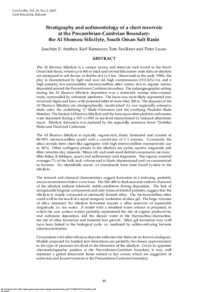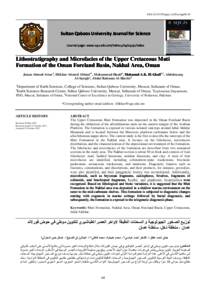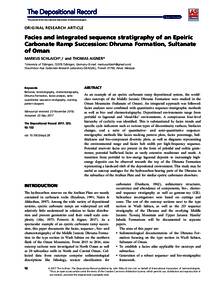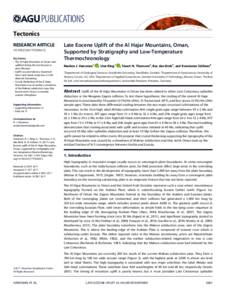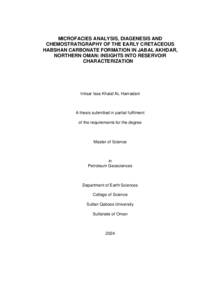Document
Stratigraphy and sedimentology of a chert reservoir at the precambrian-cambrian boundary : the Al Shomou Silicilyte, south Oman salt basin.
Identifier
DOI: 10.2113/geoarabia100289
Source
GeoArabia. v. 10, 2, p. 89-122
Contributors
Country
Bahrain.
City
Manama
Publisher
Gulf PetroLink.
Gregorian
2005-04-01
Language
English
English abstract
The Al Shomou Silicilyte is a unique source and reservoir rock found in the South Oman Salt Basin, where up to 400 m thick and several kilometers wide slabs of silicilyte are entrapped in salt domes at depths of 4 to 5 km. Discovered in the early 1990s, the play is characterized by light and sour oil, high overpressures (19.8 kPa/m), and a high-porosity, low-permeability microcrystalline silica matrix rich in organic matter, deposited around the Pecambrian-Cambrian boundary. The palaeogeographic setting during the Al Shomou Silicilyte deposition was a restricted, marine intra-cratonic basin, surrounded by carbonate platforms. The basin was most likely segmented into structural highs and lows, with potential relief of more than 200 m. The deposits of the Al Shomou Silicilyte are stratigraphically 'sandwiched' by two regionally extensive shale units, the underlying 'U'-Shale Formation and the overlying Thuleilat Shale Member. The basinal Al Shomou Silicilyte and the time-equivalent platform carbonates were deposited during a TST to HST in sea-level characterised by reduced siliciclastic input. Silicilyte formation was replaced by the regionally extensive lower Thuleilat Shale and Thamoud Carbonate. The Al Shomou Silicilyte is typically organic-rich, finely laminated and consists of 80-90% microcrystalline quartz with a crystal-size of 2-3 microns. Commonly, the silica crystals form sheet-like aggregates with high intercrystalline microporosity (up to 30%). Other authigenic phases in the silicilyte are pyrite, apatite, magnesite and illite/ smectite clay minerals. Minor silt- and sand-sized detrital components are mica/illite flakes, K-feldspar, quartz and sedimentary rock fragments. The organic material averages 7% of the bulk rock volume and is finely disseminated and/or concentrated in laminae. No identifiable macro- or microfossils have been found to-date in the silicilyte. The textural and chemical characteristics suggest formation in a reducing, probably anoxic environment below wave base. The 300-400 m in thickness and uniform character of the silicilyte indicate relatively stable conditions during deposition. The lack of recognizable biogenic components and only traces of detrital particles, suggest that the silicilyte is mostly composed of chemically formed silica. The microcrystalline silica could well be the result of a rapid inorganic nucleation of silica gel. The large volumes of silica necessary for silicilyte formation require a silica reservoir of reasonable magnitude, i.e. sea water. A model with a stratified water column is proposed, in which the oxic surface waters probably represented the site of organic productivity and carbonate deposition, and the deeper water at the thermocline/chemocline, the site of silica formation and bacterial mat growth. Silica gel formation may well have been linked to the biological cycle, i.e. mediated by sulfate-reducing bacteria (chemoautotrophs). Comparison with other siliceous deposits indicates that there are no known analogues. Models proposed for banded iron formations are probably the closest approximation to the type of processes involved in the formation of the silicilyte. Given its apparent chronostratigraphic position at the Precambrian-Cambrian boundary, it may well represent a global deepwater facies related to key events which are suggestive of extinction and faunal turnover at the Precambrian-Cambrian boundary.
ISSN
1025-6059
Category
Journal articles

